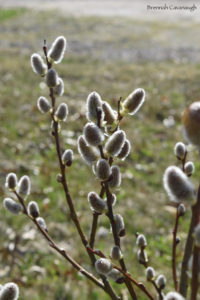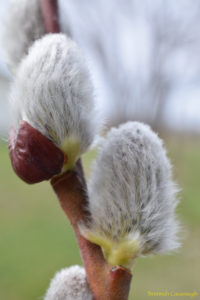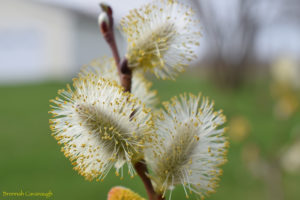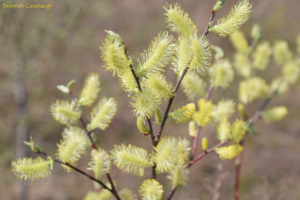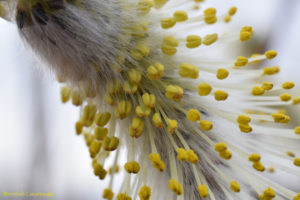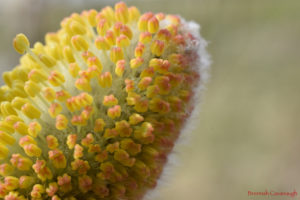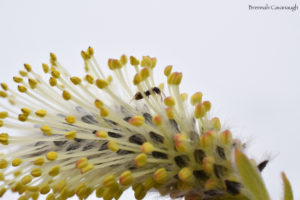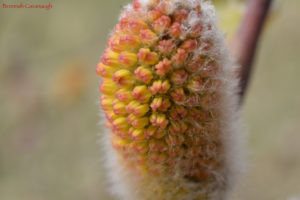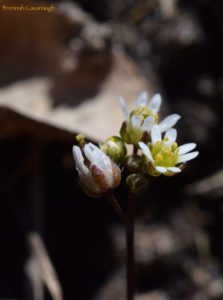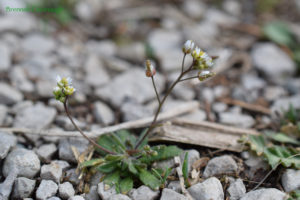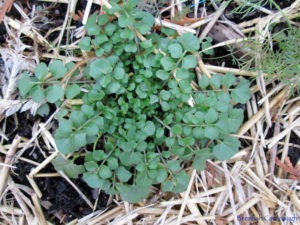People seem to notice the willow catkins when they are small and fuzzy, but this stage is essentially just a bud of a flower that has not yet opened. They are not quite what one thinks of when thinking of flowers; they don’t have petals, and they don’t look like they are trying to attract insects. But they are the part of the plant that produces its pollen and its seeds. Unlike many flowers, though, the pollen is produced on separate catkins on separate plants from the seed producing catkins.
The small fuzzy buds are generally more appreciated for their appearance, and they are pretty, but I actually find their later stages to be even more fun to photograph. There is a surprising amount of variety in the opened willow catkins (even of the same species of willow), and I took more than fifty photos of the opened catkins this spring; most of them seem distinctly different from each other. The catkins are very attractive to pollinators since there’s not a lot flowering yet, and the insects give even more variety to the pictures of the opened catkins.
It occurred to me, while taking pictures of insects on the seed producing (female) catkins, that if willows were wind pollinated, as most plants with catkins are, then the pollinators should have no interest in the female catkins. Since many pollinators eat pollen, as well as nectar, it wouldn’t have been surprising to see them on the male catkins only, but they were just as excited about the female catkins. It seemed that willows must actually be insect pollinated, and a little bit of research confirmed my guess.

